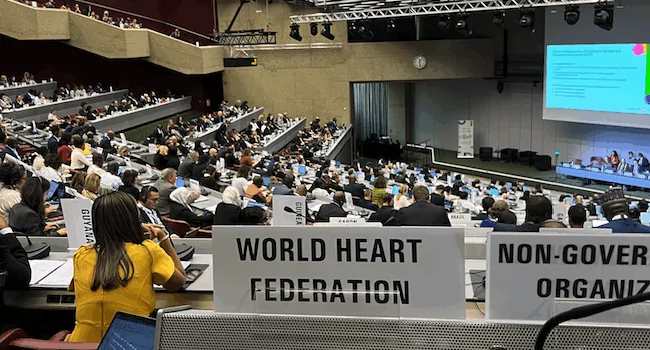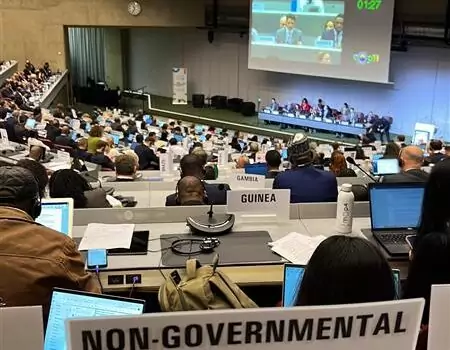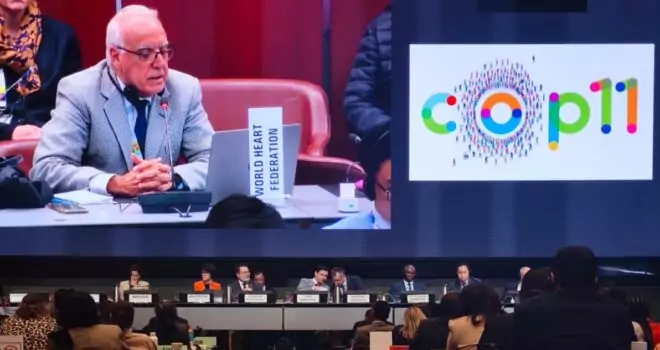Professor Prabhakaran Dorairaj is the Executive Director of the Centre for Chronic Disease Control, New Delhi, a Distinguished Professor of the Public Health Foundation of India and President-Elect of the World Heart Federation. He spoke about receiving the “Excellence Award for Hypertension Risk Reduction,” his belief in a better future addressing a condition that caused more than 10 million deaths due to cardiovascular disease (CVD) in 2021.

Q. You have spent decades researching and treating cardiovascular disease – are you seeing signs of hope even though CVD kills the most people every year, more than any other ailment?
Thank you for the kind words. Yes, I am quite optimistic that we will combat CVD across the world. In high-income countries, in the last 4-5 decades there has been a 50% decline in CVD mortality and most deaths now are occurring after the age of 70 years. Even in a country like India which had one of the highest premature mortality due to CVD we are seeing a decline (though not yet substantial) in CVD mortality. These changes are rooted in simple non personal policy measures and health system changes which can be low cost as well as cost saving. Examples are tobacco control measures and making available low cost yet contemporary cost-effective drugs for the management of hypertension in primary care.
Q. We say hypertension is not difficult to treat and is one of the highest yet most manageable risk factors for cardiovascular disease so why is hypertension still so widespread?
Hypertension I would say is a disease of three paradoxes:
1. It is Easy to detect but diagnosis rates are dismal
2. Easy to treat but treatment rates are disappointing
3. Several potent drugs are available, but control rates are abysmal
There are several reasons for it being widespread. These include poor awareness, lack of early detection and inadequate access to care. And even those who are screened and diagnosed often do not get targeted treatment.
Q. What barriers remain in treating hypertension; are they the same everywhere?
There are several barriers for hypertension control. These include
• Poor access to care
• Insufficient human resources at primary care level
• Poor drug availability and erratic drug supply due to supply chain inadequacies.
• Fragmented health care
• Poor adherence and compliance to treatment by patients
• Physician inertia after initial treatment
• Lack of knowledge on the best initial treatment of hypertension
• Inadequate attention to lifestyle modification such as reduction in sodium intake, reduction/cessation of alcohol intake, increased intake of fruits and vegetables and improved physical activity.
• In addition, the ubiquitous air pollution also adds to this burgeoning problem.
Q. What does winning this excellence award mean to you?
The award is a recognition of years of work in hypertension control in a collaborative framework. It recognizes the importance of multi stakeholder engagement. While it is exciting to receive the award it is also humbling by emphasizing the fact that no single individual can achieve hypertension control even in a small microcosm of the society and that it needs a wider engagement including the non-health sector.
Q. What can governments do in the fight to reduce hypertension and CVD?
We have achievable asks of world leaders and steps they can take now. In fact, this September in New York at the UN High-Level Meeting on NCDs and Mental Health, we urge three actions including treating 500 million more people with hypertension by 2030; other asks are for excise taxes on tobacco, alcohol and sugar-sweetened beverages and stronger action on air pollution.
Q. What are some of your current projects/ongoing research on hypertension and other areas of CVD that the health community should stay tuned to?
We just completed a large, randomized trial on the best initial dual combination anti-hypertensive therapy among Indians and it is being evaluated for publication in Nature Medicine. In addition, we will be initiating a large cluster randomized trial of task-sharing through technology-enabled community champions in India and Nepal as part of combating multimorbidity in which hypertension will be a large component. In addition, we are undertaking a large cluster randomized trial of an interoperable telemedicine platform mounted on mobile clinics for care of the elderly population with CVD in several Indian villages. Again, here hypertension will be a major focus. We are also involved in a large-scale capacity building program of primary care physicians in collaboration with the American Heart Association and we hope this will be rolled out soon.
Q. What else would you wish to share with the global health community that we have not covered in this chat?
I think what we need to combat CVD is a systems approach that involves re-imagining and reinventing the health systems. Involvement of the community is essential and there are several new methods such as e cohorts and photo-voice in engaging the community to share their stories and dialogue. We should consider family-based approaches in CVD prevention.
—ends–


